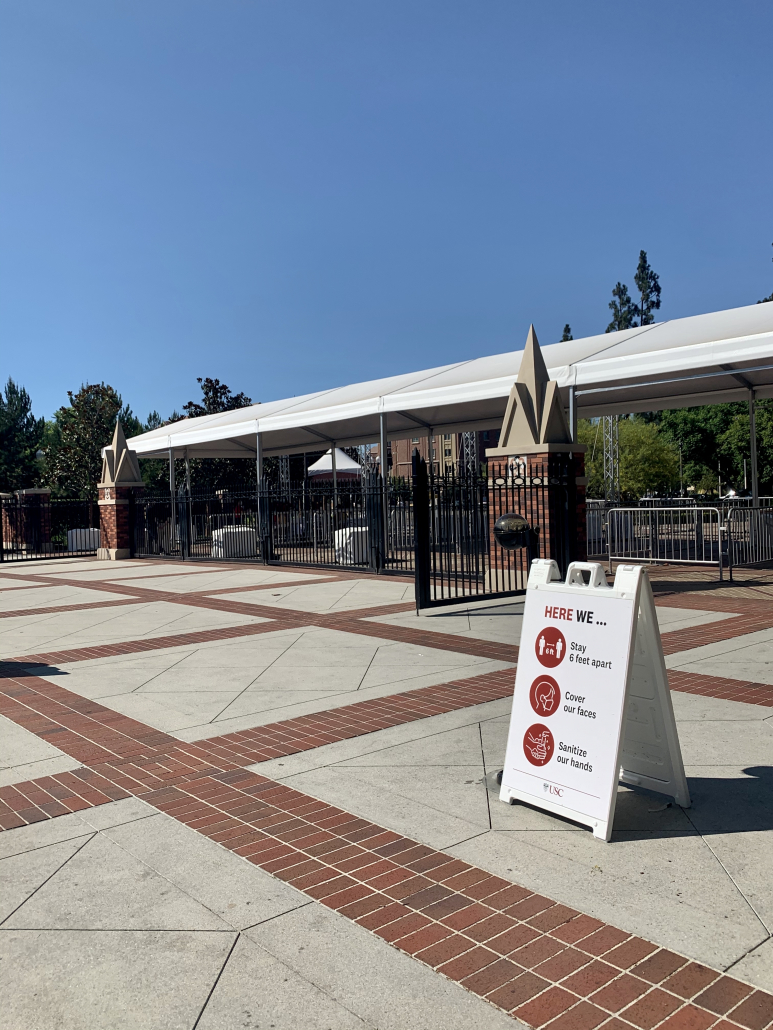Positive coronavirus cases among students surge to 104

One hundred and four students have tested positive for the coronavirus since Monday, Chief Health Officer Dr. Sarah Van Orman confirmed Thursday in a media briefing. Over the past three days, USC Student Health has seen a “very dramatic” rise in cases, totaling to the highest single increase in cases yet at the University.
Of the nearly 1,600 coronavirus tests conducted this week, with 500 of the tests still pending, 73 students tested positive through Student Health’s testing for individuals who are symptomatic or exposed to the virus. Through external testing distributor Color’s asymptomatic surveillance testing, 31 students tested positive with a 2.7% positivity rate — “very high” for typical population testing, which should be around 0.3%, Van Orman said.
These numbers add to the “alarming increase” in the number of cases that Van Orman announced Monday in an email to the USC community. This week, the first three cases were identified in on-campus housing, Co-Medical Director and Faculty Physician of Internal Medicine Dr. Kimberly Tilley confirmed Wednesday. Additionally, eight student-athletes between USC’s football and men’s water polo teams have tested positive, USC Athletics announced in a press release Wednesday.
According to Van Orman, all cases — including those identified in USC Housing — are related to off-campus activities.
“We do our case investigation and our contact tracing with every case, but with those particular cases in [USC] Housing, we of course did all of that evaluation,” Van Orman said in the briefing. “They were very much linked to off-campus activities, and did not really, there was no risk or exposure to the rest of the on-campus housing community.”
According to Van Orman, as of yesterday, about 60 individuals have been self-isolating at USC Hotel, which has enough capacity for 240 individuals to isolate single-occupancy. Based on cases from the past six months, Van Orman said that students have generally ranged from being asymptomatic to having mild cold-like symptoms to contracting high fever and more significant illness, the last of which is the minority. Only one student was hospitalized briefly in June, though Van Orman said they were not an undergraduate and older than the typical college student demographic.
“The more people that get [the coronavirus], the more the likelihood is that we will have unfortunately someone with a severe outcome, and of course that’s what we really want to try to avoid at all costs,” Van Orman said. “I do think that there is a perception that this is a mild illness and this is not an illness that’s going to cause any harm to someone who’s maybe younger or healthier, and while the likelihood is much lower than in an older population, that doesn’t mean that it can’t happen.”
Van Orman said she has been meeting with several student groups, fraternity presidents, off-campus landlords and more to communicate that USC Student Health is available for testing. However, she stressed that students not only need to get tested regularly, but they also need to adhere to social distancing guidelines.
“There’s really no rate of testing and contact tracing that allows people to gather in congregate settings when you have high community rates,” Van Orman said. “So certainly testing and contact tracing are really important, but it has to be paired with social distancing to try to control high rates of transmission.”

